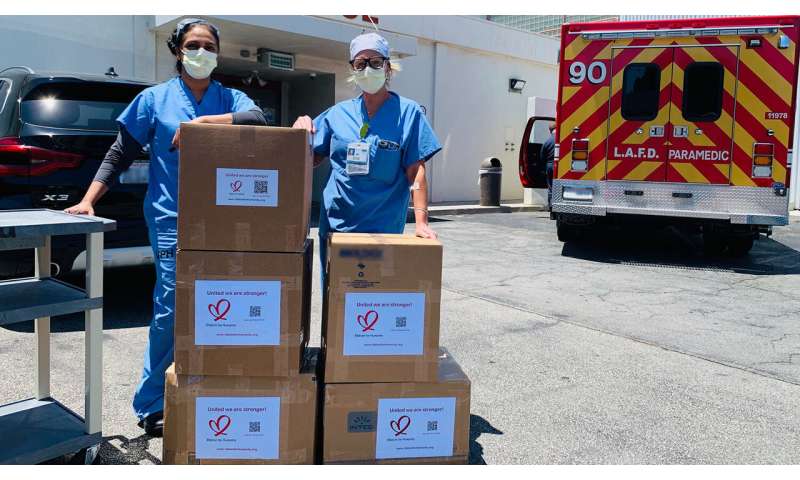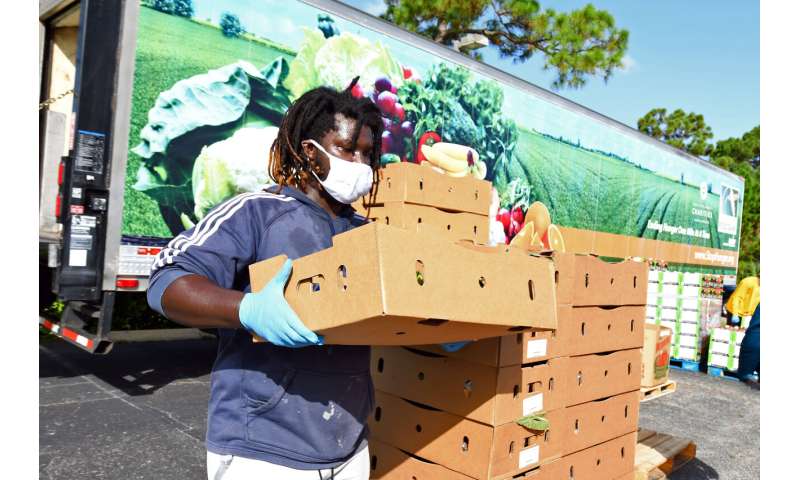by Portland State University

Credit: Unsplash/CC0 Public Domain
School districts across the U.S. are increasingly using student test scores to rate the effectiveness of teachers, but a new Portland State University study found that the scores have less to do with individual teachers and more to do with their students and the schools.
The study looked at the value-added scores of 4,500 teachers in a large urban district as they changed schools between 2007 and 2013. The idea of value-added models is to measure the impact a teacher has on student learning by comparing new test scores to previous ones, and comparing test score gains across teachers. Supporters of the approach say looking at how much a student has progressed in a year, regardless of where they started from, captures the effectiveness of a teacher.
Dara Shifrer, the study's author and sociology professor at PSU's College of Liberal Arts and Sciences, said that if that's true, then a teacher's score should remain constant regardless of the school they work in or the type of students they teach.
Instead, when she tracked individual teachers, she found that their scores increased when they switched into high-performing (often low-poverty) schools and decreased when they switched into low-performing (often high-poverty) schools.
"If the teacher moved to a school where there were more poor students, more English language learners or generally more challenging teaching environments, then their scores dropped," Shifrer said. "The changes in individual teachers' scores over time were consistent with shifts in the economic status and race of students in their classrooms and schools."
The study focused on scores from the Education Value-Added Assessment System (EVAAS), which is used in a dozen states, including Arkansas, California, Delaware, Georgia, Indiana, North Carolina, Ohio, Pennsylvania, South Carolina, Tennessee, Texas and Virginia.
Shifrer said the study is more evidence that the factors beyond a teacher's control—socioeconomic background, the impact of social inequality, racial segregation—affect students' learning and whether teachers and schools are seen as effective.
"These value-added scores haven't solved the problem of how to evaluate teacher quality and they limit our ability to understand how students learn and what affects it," she said. "Policymakers need to recognize how powerfully social inequality outside of schools affects what's happening inside of schools."
Shifrer said that educational disparities will be most effectively addressed by targeting inequality in society. The study recommends that teachers who work in high-poverty schools be paid a higher salary and schools should be sufficiently funded to provide the social services that are necessary to support their students.
Explore further
School districts across the U.S. are increasingly using student test scores to rate the effectiveness of teachers, but a new Portland State University study found that the scores have less to do with individual teachers and more to do with their students and the schools.
The study looked at the value-added scores of 4,500 teachers in a large urban district as they changed schools between 2007 and 2013. The idea of value-added models is to measure the impact a teacher has on student learning by comparing new test scores to previous ones, and comparing test score gains across teachers. Supporters of the approach say looking at how much a student has progressed in a year, regardless of where they started from, captures the effectiveness of a teacher.
Dara Shifrer, the study's author and sociology professor at PSU's College of Liberal Arts and Sciences, said that if that's true, then a teacher's score should remain constant regardless of the school they work in or the type of students they teach.
Instead, when she tracked individual teachers, she found that their scores increased when they switched into high-performing (often low-poverty) schools and decreased when they switched into low-performing (often high-poverty) schools.
"If the teacher moved to a school where there were more poor students, more English language learners or generally more challenging teaching environments, then their scores dropped," Shifrer said. "The changes in individual teachers' scores over time were consistent with shifts in the economic status and race of students in their classrooms and schools."
The study focused on scores from the Education Value-Added Assessment System (EVAAS), which is used in a dozen states, including Arkansas, California, Delaware, Georgia, Indiana, North Carolina, Ohio, Pennsylvania, South Carolina, Tennessee, Texas and Virginia.
Shifrer said the study is more evidence that the factors beyond a teacher's control—socioeconomic background, the impact of social inequality, racial segregation—affect students' learning and whether teachers and schools are seen as effective.
"These value-added scores haven't solved the problem of how to evaluate teacher quality and they limit our ability to understand how students learn and what affects it," she said. "Policymakers need to recognize how powerfully social inequality outside of schools affects what's happening inside of schools."
Shifrer said that educational disparities will be most effectively addressed by targeting inequality in society. The study recommends that teachers who work in high-poverty schools be paid a higher salary and schools should be sufficiently funded to provide the social services that are necessary to support their students.
Explore further
More information: Dara Shifrer, Contextualizing Educational Disparities and the Evaluation of Teacher Quality, Social Problems (2020). DOI: 10.1093/socpro/spaa044
Provided by Portland State University

 Inspired by work on infants, researchers at the Eötvös Loránd University (ELTE) investigated whether dogs' behaviors are guided by human displays of preference or by the animals' own choices. Credit: Bence Járdány
Inspired by work on infants, researchers at the Eötvös Loránd University (ELTE) investigated whether dogs' behaviors are guided by human displays of preference or by the animals' own choices. Credit: Bence Járdány (
(






